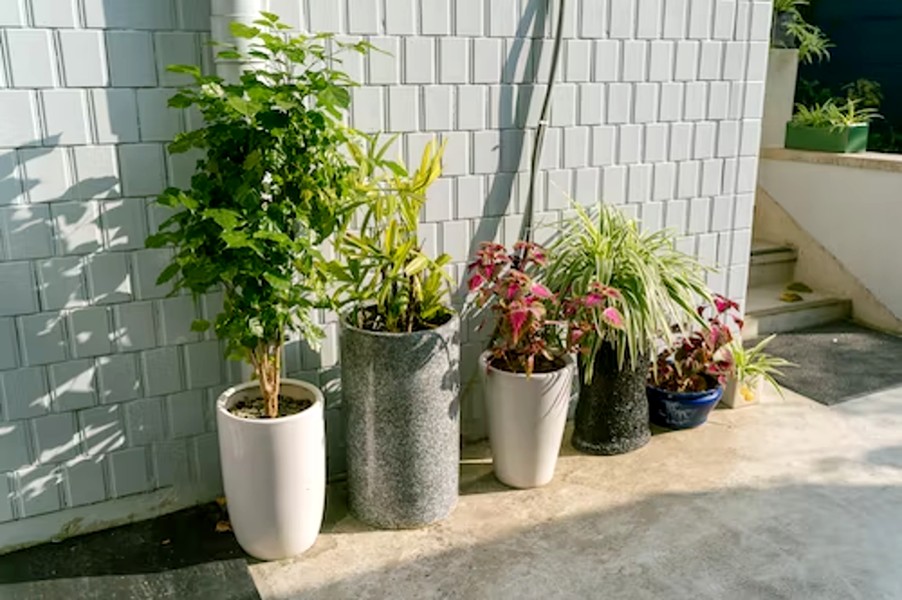
Tiles have become a popular choice for flooring in both commercial and residential spaces.
They come in many different shapes and styles, and their versatility makes them a great option for any room. In this article, we will provide you with a comprehensive guide to the different types of tiles and their best uses. We’ll also discuss some of the key considerations when choosing tiles for your home or business. By the end of this article, you’ll have a better understanding of the different types of tiles available on the market and know which ones are best suited for your needs.
What are the Different Types of Tiles?
There are a variety of different types of tiles that can be used for both indoor and outdoor flooring. These tiles come in a variety of materials and sizes, so it’s important to choose the right one for your project.
Ceramic: Ceramic tiles are a popular choice for floors because they’re fire-resistant, waterproof, and have good slip resistance. They also come in many different colors and styles, so you can find the perfect tile for your project.
Linoleum: Linoleum is another type of flooring that is popular for its durability and low cost. It has a smooth finish that is easy to clean and can last several years if treated properly.
Brick & Stone: Brick and stone tiles are ideal if you want a natural look for your flooring. They come in many different colors, patterns, and sizes, so you can find the perfect tile for your project.
Tile Grout: Tile grout is an essential part of any tile installation. It helps to seal the joints between the tiles so that they don’t leak water or dirt. Tile grout comes in a variety of colors and styles, so you can choose the perfect one for your project. Thanks to Benjamin Stenson, CEO & Founder of Norsemen Home Remodeling.
What is the Difference between a Floor and a Wall?
A floor is an area of a building that is typically covered in flooring, such as tile, wood, or carpet. A wall is an area of a building that is typically not covered in flooring, such as a door or window.
What is the best tile for your project?
It is important to keep a few things in mind when choosing a tile for your project. The first thing to think about is the type of flooring you plan on installing. Next, decide what type of look you want. Finally, consider how often you will use the area where the tiles will go and whether you need non-skid properties. Then find tiles that fit those requirements and match the color palette of your room. If you’re installing tile in a floor area that will be used frequently, choose tiles with a high durability and non-slip properties. If your project is for a special occasion or you don’t plan on using the area often, choose tiles with a more casual look. For example, if you’re installing tile in a hallway, opt for patterns that are less intricate than those used in the living room. When selecting tiles for your project, it’s important to consider your needs and preferences as well as the style of the room.
If you’re installing flooring in a room that’s used regularly, choose tiles with a high slip resistance rating. Slippery surfaces are more dangerous when children or pets are nearby; installing non-skid floor tiles will help protect both you and them. If the area is only occasionally used or isn’t accessible by others, choose tiles with a lower slip resistance rating so they’ll still stay in place but require less attention from you or your pet owner. This is according to Alex Federo, Co-owner of FTW Concrete Contractors.
When choosing tile for your project, consider what kind of floor area will be used most often and choose tiles with a durable design and nonslip properties.
In addition to slip resistance ratings, other factors to consider when choosing tile for your project include:
- intended use – Some tiles are best suited for specific areas such as kitchens or bathrooms while others can be used in any room;
- style – Floral patterns may be best suited for a nursery while geometric designs might work better in an office;
- surface texture – Some tiles have bumpy textures that add interest and character to a space while others are smooth and sleek;
- color palette – When choosing tile for a large space like an entire wall or floor, consider coordinating different colors to create a cohesive look. When installing tiles in a smaller area, it’s easiest to stick with one or two main colors.
Once you have a general idea of what you want, head to your local tile store and start browsing. A tile store typically has more variety than you might find at a hardware store or home goods store, and the staff is likely more knowledgeable about tile and its compatibility with other materials.
What are the different types of tiles? There are a variety of different types of tiles that can be used for both indoor and outdoor flooring. These tiles come in a variety of materials and sizes, so it’s important to choose the right one for your project.
What is the difference between a floor and a wall? A floor is an area of a building that is typically covered in flooring, such as tile, wood, or carpet. A wall is an area of a building that is typically not covered in flooring, such as a door or window.
If you’re installing flooring in a room that’s used regularly, choose tiles with a high slip resistance rating. Slippery surfaces are more dangerous when children or pets are nearby; installing non-skid floor tiles will help protect both you and them. If the area is only occasionally used or isn’t accessible by others, choose tiles with a lower slip resistance rating so they’ll still stay in place but require less attention from you or your pet owner.
Conclusion
So, you’ve decided to get some new tiles for your home renovation project. Congratulations! The process of choosing the right tiles can be overwhelming, but with this guide, you’ll be able to make an informed decision and find the perfect flooring solution for your space. Here are four types of tiles that you may want to consider: natural stone, porcelain ceramic tile, vinyl plank tile, and laminate flooring.
Each type of tile has its own benefits and drawbacks, so it’s important to choose the right one for your project. Keep in mind that tiles are made to be both functional and fashionable, so don’t be afraid to experiment a little.
Become a Harlem Insider!
By submitting this form, you are consenting to receive marketing emails from: . You can revoke your consent to receive emails at any time by using the SafeUnsubscribe® link, found at the bottom of every email. Emails are serviced by Constant Contact








